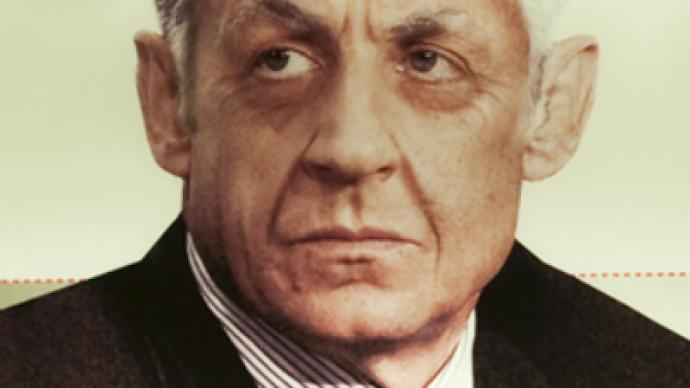‘Robot pics’ rage debate

Newspapers depicting politicians as aging and fat, the FBI representing politicians as terrorists, and photographers faking their subjects to win competitions: Has the new era of photography lost its ethical standards?
The picture published by the FBI using features of Gaspar Llamanzares to represent how Osama Bin Laden may look now triggered outrage and led to the United States agency apologizing to the Spanish United Left (IU) politician, admitting that they did not have his photo on file but found it via a Google search. The row over such pictures being published has now intensified, as the Spanish national newspaper El Mundo recently spurred criticism by using aging technology and Photoshop on two of the most senior politicians in Partido Popular (PP), Spain’s main right-wing political party. Images of Alberto Ruiz Gallardon, Madrid’s mayor, and regional President Esperanza Aguirre, were published, estimating, rather unflatteringly, what they will look like ten years from now.
The creation of “unethical”, digitally-enhanced photographs are being used to craft “high moral” arguments. In December, as no apology came from world leaders following their climate change summit fiasco, “morally upstanding” Greenpeace decided to express regret for them by placing a series of advertisements up in Copenhagen’s airport. The banners depicted the likes of Barack Obama, Gordon Brown and Nicolas Sarkozy, considerably matured in the year 2020, saying they were sorry and admitting they could and should of done something to stop climate change. The campaign, with its blatantly grim projection of the future, triggered outrage, cleverly engineered by Greenpeace who, by taking the moral high ground and using digitally modified imagery to do so, are influencing current politics.
These latest incidents of digitally altered, age-enhanced representations of public figures to, in the case of Llamanzares, show the world how the most wanted terrorist may look today, and with the Spanish PP politicians, to spur mockery and help sell the newspaper, and in Greenpeace’s Copenhagen campaign, to create a moral high ground and influence politics – without their knowledge or permission – has opened a door to a debate about the ethics of what have been termed “robot pics”.
Using an unsuspecting and innocent member of Spain’s communist party to help depict the world’s most wanted terrorist, is not the first time the US federal government has come under scrutiny for technically modifying images of people. In 2008, the Associated Press were forced to suspend the use of military photographs after the US government had circulated a digitally modified image of Ann E. Dunwoody, the military’s first female four star general.
Global Journalist contributor, Mark Hancock recently voiced his concern how the growth of technology and digital photographic modification is shrinking ethical standards. Reiterating the belief that modern image enhancing technology is compromising moral values is Terry Brewer, a retired Baptist pastor of the evangelical Protestant churches in the UK. Talking to RT, Brewer said:
“Placed in the wrong hands, particularly the media, such technology is going to be abused and exploited. A worker should not tamper with his tools at the expense of others.”
Not everybody, though, is so critical about publishing images using software to change them in some way. Karen Revel, editor of the Messenger in Spain newspaper, believes if used constructively, image alteration works well. Revel told RT:
“I think there is a time and place for using applications such as Photoshop to enhance or alter images. I have seen it used to help trace missing people to show how they may look today, which is constructive. If it does not serve any real purpose or relevance, then I do not see there is any need to publish such photos. Although I certainly wouldn’t relish the idea of seeing myself in ten years time – bad enough looking in the mirror now.”
However, the use of digitally altered photography is not confined to people. Last summer the New York Times were forced to remove a photograph from its website of an unfinished housing construction project. A blogger informed the paper that he believed the picture had been altered in some way. It was later revealed that the photograph had been doctored for aesthetic reasons.
Image manipulation within the realms of wildlife photography has also recently come under inquiry. It was recently announced that last year’s Natural History Museum’s wildlife photographer of the year has been stripped of his 10,000-pound award. Judges of the annual competition were convinced that the winner, Jose Luis Rodriguez had staged the photograph by hiring a tame Iberian wolf to stand as a wild species. RT attended the opening night of the wildlife competition, which takes place in Spain each year, in Mojacar, Almeria, and talked exclusively to competition organizers. One organizer commented:
“As this is a wildlife competition, all the subjects and situations have to be ‘wild’. No staging or photo manipulation is accepted.”
Whilst there may be nothing new in modifying photographs, as image manipulation is becoming easier to accomplish with the increased sophistication of technology, maintaining ethical standards are increasingly being compromised, be it for financial, aesthetic, personal or political gain. Perhaps if detecting such forgeries by using software such as the one developed by Citizenside – a citizen aesthetics photojournalism agency, which immediately detects whether a photo has been altered – became more commonly practiced or even enforced, it would deter the subsequent anguish caused by doctored photos being published. Then the likes of Gaspar Llamazares would not feel that his safety was more threatened than Osama Bin Laden’s, and Esperanza Aguirre and Alberto Ruiz-Gallardón would not have to open the paper to be faced with a grey and uncomplimentary photo of themselves looking ten years older.
Gabrielle Pickard for RT












